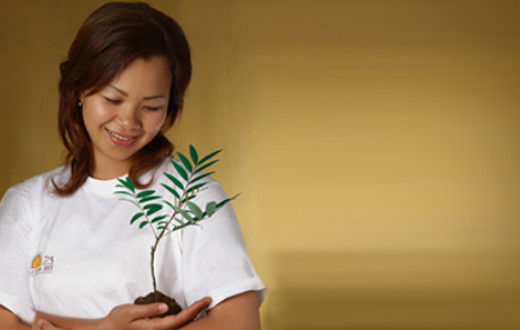Overview
Location: Pan-India
Duration: 2014
Partner: UNICEF
The Girl Pledge Campaign 2013 was a stirring and deeply motivating campaign inspired by The Art of Living and with the support of UNICEF that touched over a million lives in India through active volunteerism. People of all ages and from all walks of life committed to working towards a better life for the girl child during the campaign.
In 2014, we moved to the next phase of the campaign – ACT NOW 2014 – as we inspired people to perform tangible acts in support of the girl child through individual and collective action and driven by the same passion that made a million people take the pledge in 2013.
The issues remained the same, but our responses and actions were now intensified. Through the campaign we intended to:
- Bring greater awareness about treating women and girls with respect and equality
- Advocate for equal opportunity and rights of women and girls
- Enable change in behavior and social norms
- Empower girls and their families to speak up and stand for themselves
- Promote protective environment to receive an adequate response when at risk
Actions taken during the campaign were recorded on our website (as the number of girls impacted in the campaign) to touch another significant record at the end of the year 2014.
What change do we hope to bring?
Through this second phase of our national initiative towards girl child protection, we aimed to bring about deep-rooted awareness and widely accepted changes in the everyday lives of girls and women across India. The aim is to develop self-sustaining models for carrying out various empowerment movements for the girl child.
Our agents of change are our national networks of volunteers who have grown over the years on a foundation of service, human values, deep commitment to social transformation and a better life for all. Many of our volunteers are youth from urban and rural areas who work selflessly to ensure sustainable transformation and in the process inspire change in the communities around them.
During the ‘ACT NOW 2014’, we returned to people who took the pledge in 2013 to see what changes had happened in their lives since they had taken the pledge a year ago. If they had indeed made the difference, we asked them to record their work on the website and to support them to take their work to the next level. If they had just made the pledge and forgotten about it, we returned to remind them that this was their second chance to relook at the status of the girl child in India and to make the difference, little or big, through tangible actions and transformed attitudes.
How does the journey look so far?
- One million pledges in 2013 in support of the girl child
- 1,14,980 girls reached out to during the Act Now 2014 Campaign
- 19,000 girls supported through The Art of Living’s free education initiatives
- 5,000 rural women provided livelihood generating skills training
How do we plan to work?
All over the country, volunteers and networks connected to The Art of Living and UNICEF inspired people in homes, communities, organizations, and institutions to:
- Conduct weekend or evening sessions with maids/housekeeping staff sensitizing them on various girl issues that they can address in their homes or organizations
- Organize fun-filled events for girls in slums/construction sites
- Conduct workshops on nutrition for women and girls in slums
- Sensitize high school children on violence against girls, child marriage, and the importance of education
- Conduct tuitions regularly for girls near them on various subjects
- Organize events at orphanages
- Conduct art classes, dance and music classes for girls in slums
- Organise/conduct awareness seminars for gynecologists about sex selection tests in areas where it is still critical
- Conduct Nukkad Nataks by school/college students in slums/villages/communities where the Girl Pledge has happened
- Organize awareness on menstrual hygiene for girls in slums/construction sites/orphanages
- Provide nutritious food to underprivileged girls near their home
- Take responsibility for young girls in their community
- Get women IAS officers, MPs and MLAs to initiate support projects for girls in their area through the department they work in
- Write articles on girl child issues and publish them in newspapers or periodicals for public awareness
- Get creative! Make and share their ideas
What did we learn?
We realized that this is a long journey and every little step will make it easier for girl children to live the life they deserve. This campaign was just one step in that direction.
How can you contribute?
Although this campaign is officially over, you can continue to work on the cause because the issue is still alive. We encourage you to work for the girl child individually or collectively with your community and office members.





